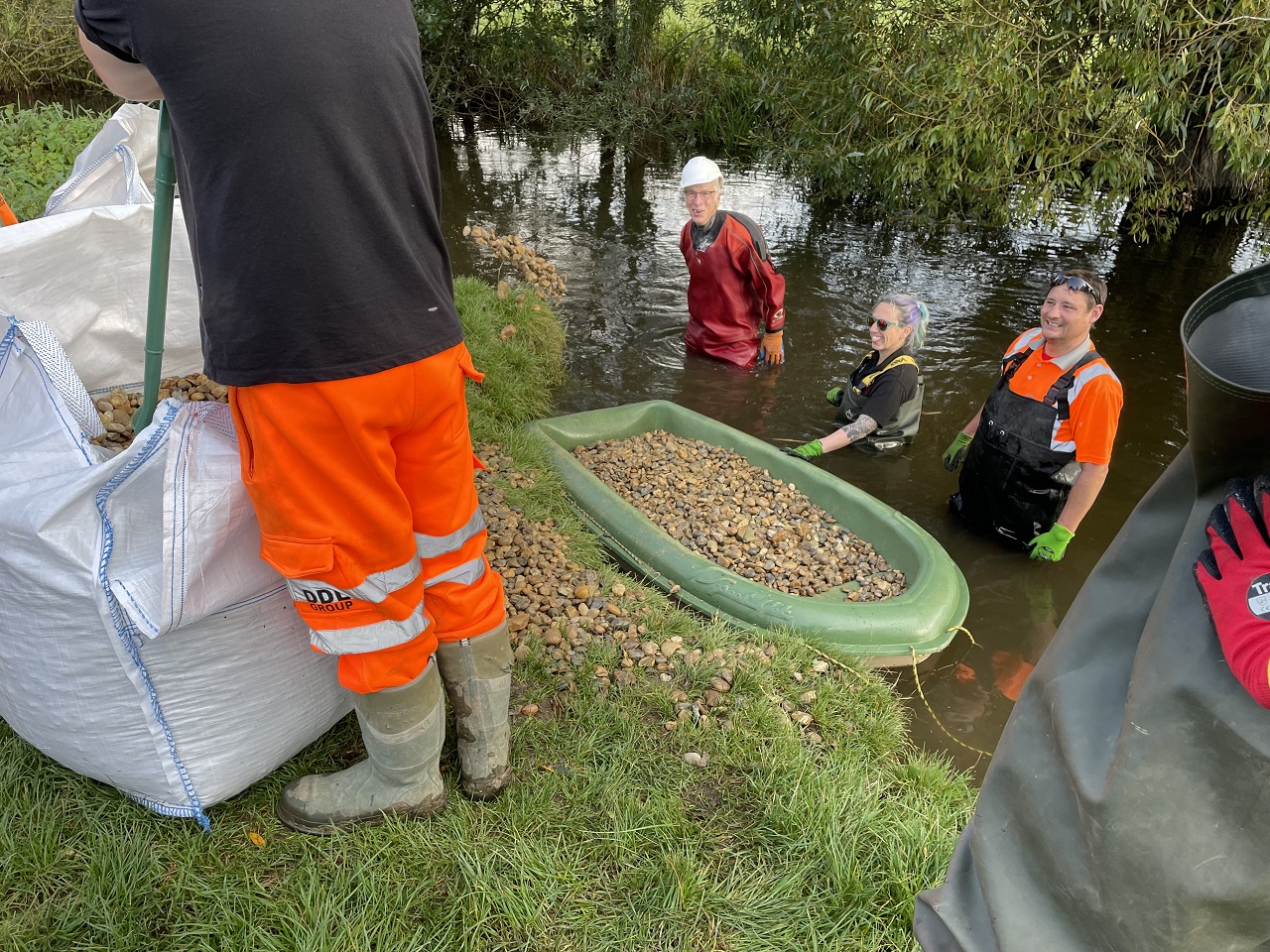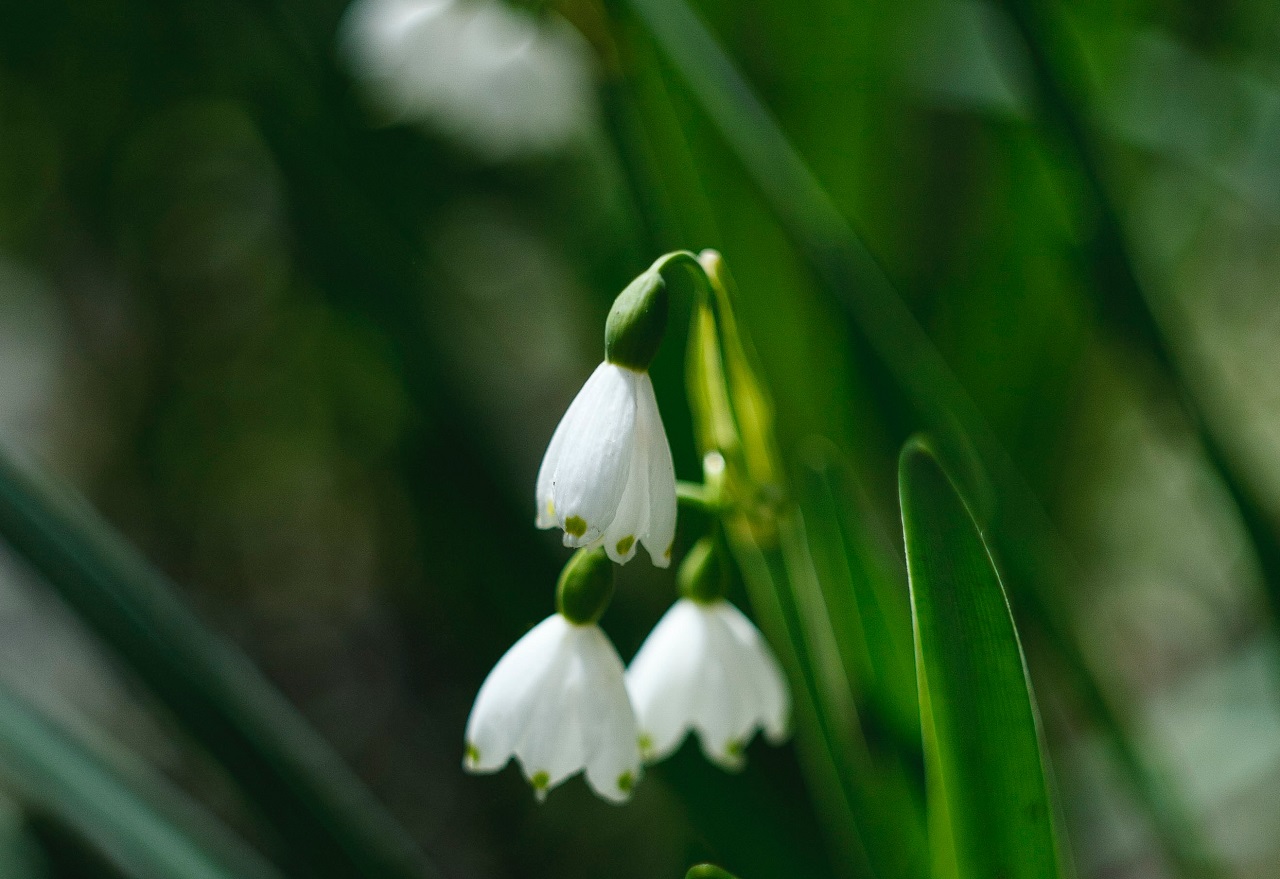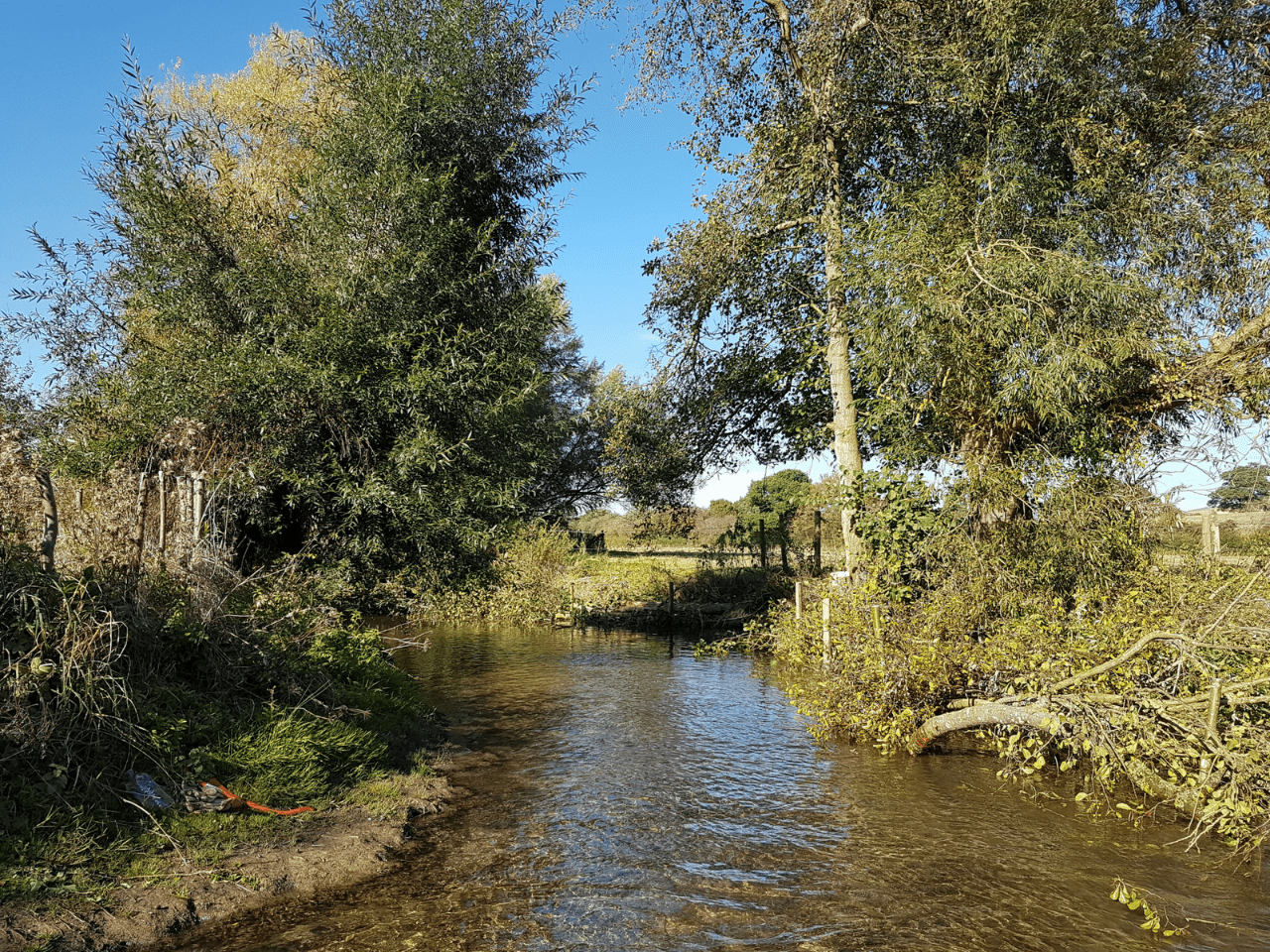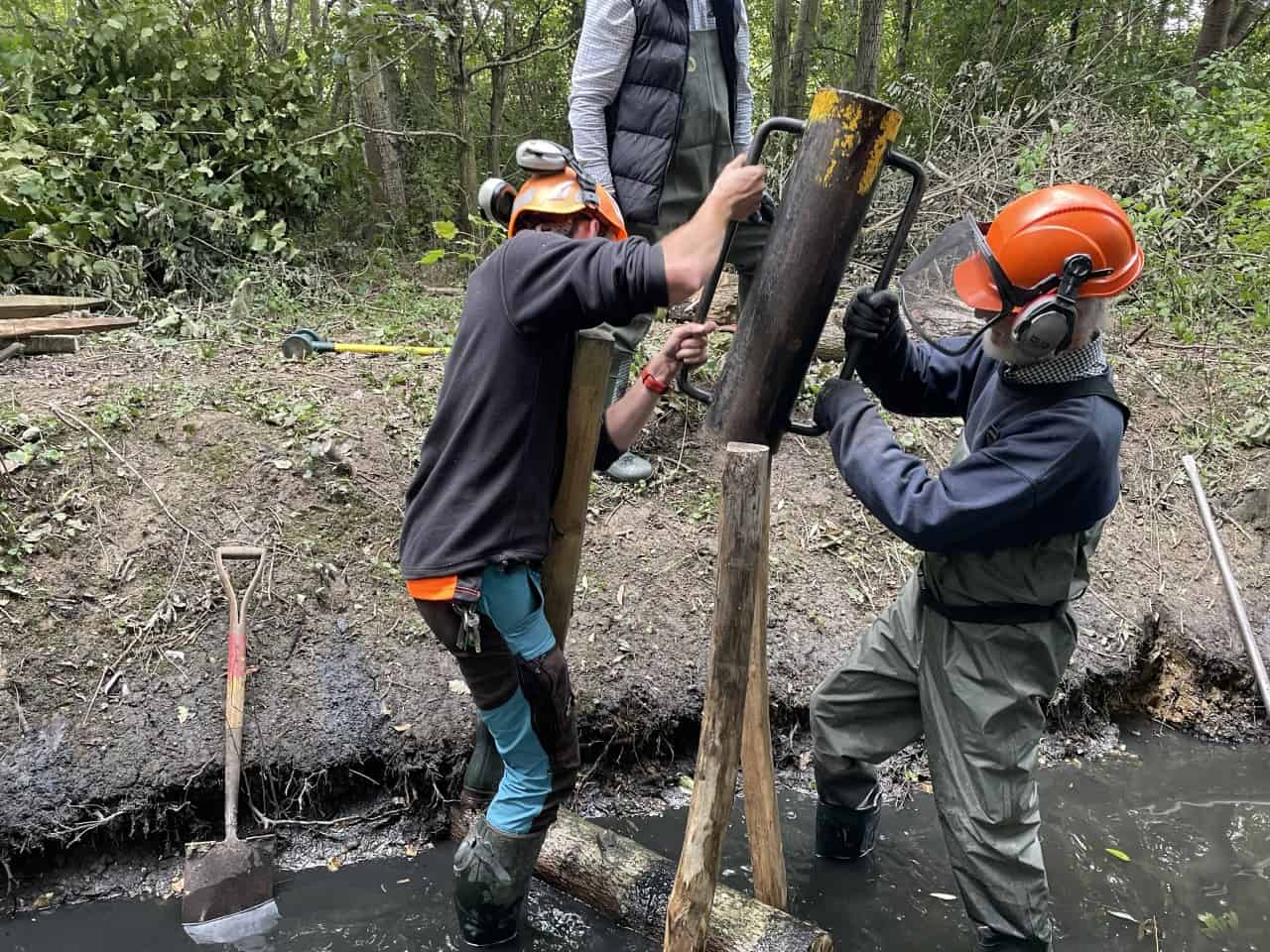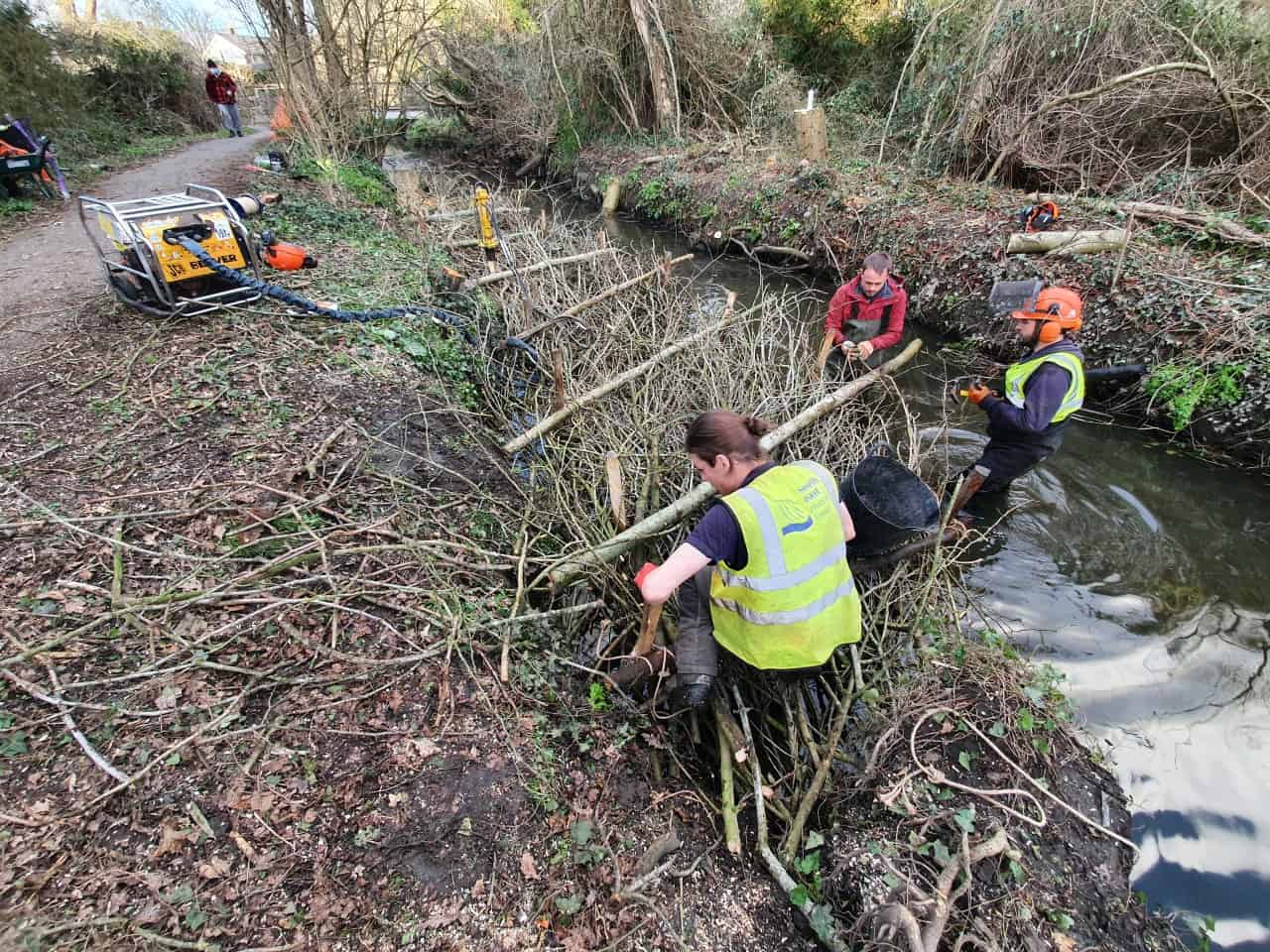Tag: Aldershot
Glorious gravel boosts the Blackwater
Assistant Project Officer Luke Beckett reports on a week-long series of events with volunteers in mid-March, putting gravel into a stretch of a River Loddon tributary to improve conditions for river wildlife.
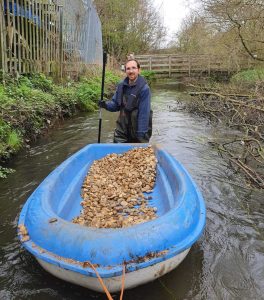
Anglers and conservation enthusiasts were among more than a dozen volunteers who joined us for the exhausting but rewarding task of installing more than 19 tonnes of gravel into the River Blackwater. In joining us earlier this month, they added a vital resource to help nature thrive into a 200 metre stretch of the river in Aldershot.
The newly seeded gravel, which is the final part of our Blackwater Valley river restoration work, will provide improved habitat for macroinvertebrates such as beetles, dragonflies and mayflies. It will also help aquatic plants thrive, as well as increasing spawning habitat for fish.
The River Blackwater at Ivy Road has historically suffered from bank and riverbed modifications. This section of the River Loddon catchment has been widened and deepened, leaving a uniform channel with little variation in water depth.
The channel has lacked flow energy and habitat diversity and subsequently, silt and fine sediments had built up, smothering the riverbed. Moreover, the site is just downstream of the Aldershot sewage treatment plant, which regularly discharges sewage effluent into the channel.
Since 2021, the South East Rivers Trust has worked with support from the Environment Agency and the Blackwater Valley Countryside Partnership, plus local volunteers, to improve this stretch of river.
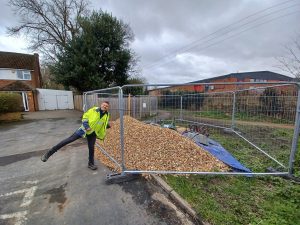
The in-channel deflectors and berms previously installed have helped to narrow the channel and increase water flow velocity, as well as habitat complexity. The increased velocity has already cleared much of the fine sediments and silt.
The newly-seeded land-based gravel will move around with the natural ebb and flow of the river, settling to form natural river features, such as bars, riffles and deeper pools.
This clean gravel and variety of river habitats is essential for river life: the River Blackwater supports a number of fish species – such as chubb, roach, perch, dace, gudgeon and rudd – all of which should benefit from this improved spawning habitat.
Gravel seeding is not the most glamorous of tasks. This site delivery was no different and was made difficult by the lack of access routes.
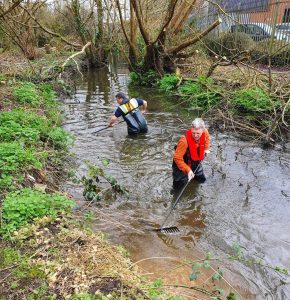
Large vehicle access to the river was not possible, which meant a lot of moving wheelbarrows loaded with heavy gravel from our drop off location to the channel itself.
The distance was at least 75 metres and up to 200 metres to push the gravel to the correct places, making this tough physical work. Wader wearing volunteers also had to rake the gravel once in the riverbed, sometimes having taken it to an appropriate location in a dinghy.
It was slow going at times, leaving us questioning whether the gravel pile was even going down! But, after four days, including a lot of rain, not enough sunshine and many teas, coffees and biscuits, the gravel pile was finally gone and the last wheelbarrow and boat load were emptied.
The team took a moment to look over their hard work from Ivy Bridge, where a few curious fish were already checking out the new riverbed, before the heavens opened once again!
This brings our river restoration work at Ivy Road Recreational Ground to a close, but we look forward to returning over the coming months and years to see how the channel responds.
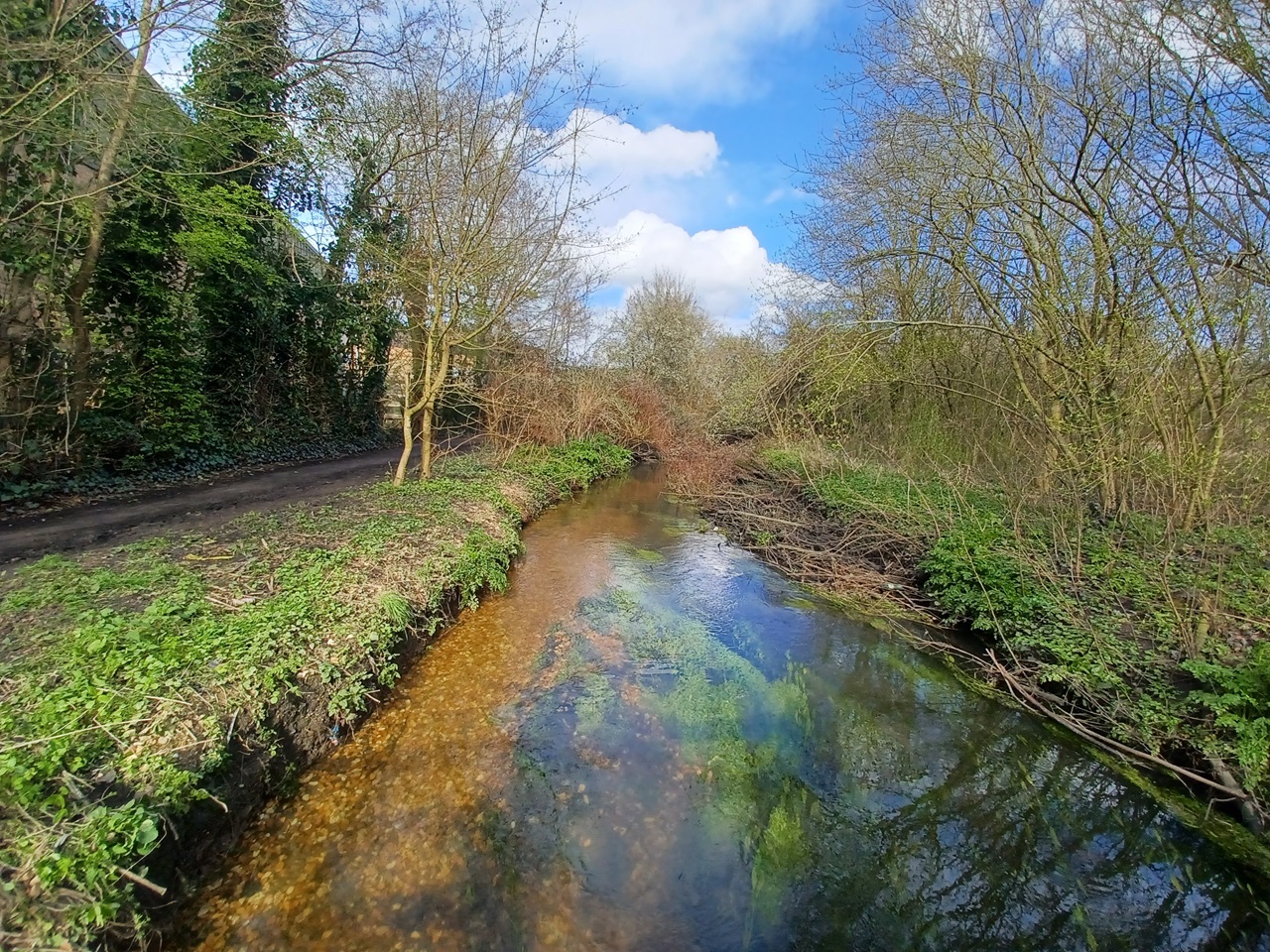
Loddon Rivers Week puts focus on the long term
Volunteers came out in large numbers during this year’s Loddon Rivers Week, held in September, to enhance river habitats in various ways, such as by adding gravels and installing deflectors.
Some of the 80+ volunteers across half a dozen sites, who clocked up more than 300 volunteer hours, were part of established groups which regularly look after sections of this river network.
However, this year’s focus week on the Loddon, co-ordinated by the South East Rivers Trust, was also a launchpad for future action to enhance this river network, which stretches across Hampshire, Surrey and Berkshire.
Many people became involved in caring the river for the first time, including families keen to get involved in volunteer work parties or learning to assess river health through carrying out Riverfly monitoring for invertebrates, which they can do regularly in the coming months.
Our Loddon Catchment Officer Lou Sykes reports.
The Fish: improving habitats
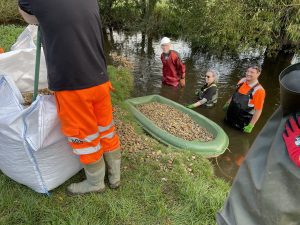
Volunteers installed 21 tonnes of gravel into the River Whitewater at Bassetts Mead, Hook, to establish deep pools and shallow riffles, creating a rollercoaster of newly improved habitat for fish and invertebrates. Fresh gravels allow fish to spawn.
Over the past three years, in partnership with Hampshire & Isle of Wight Wildlife Trust, 81 tonnes of gravel have been added to the river, improving a 200 metre section of the river.
During this year’s Loddon Rivers Week activities, volunteers also built a willow dead hedge, protecting the new riffles from dogs and children passing by on the footpath.
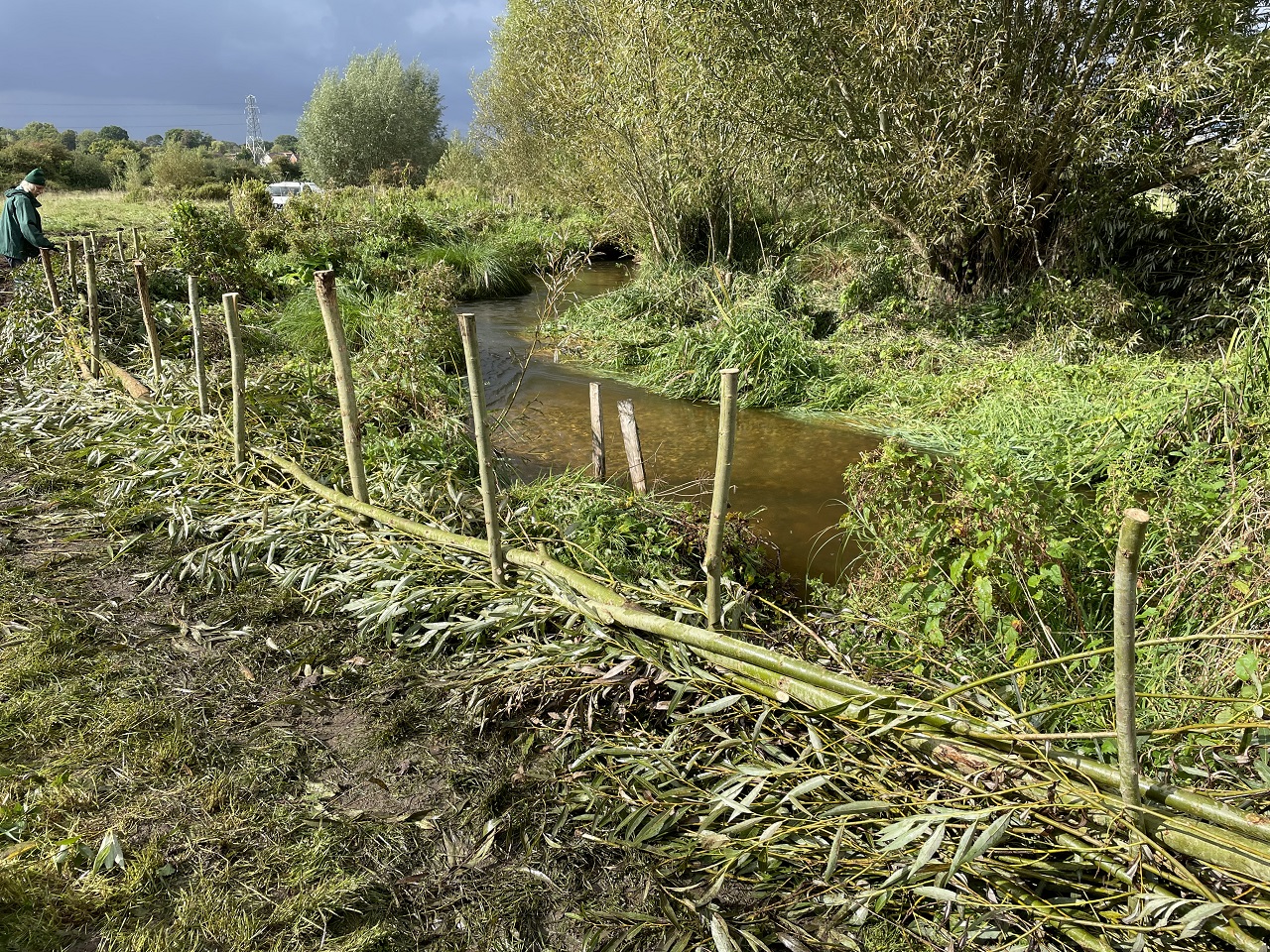
The sun: bringing light to the Petty’s Brook
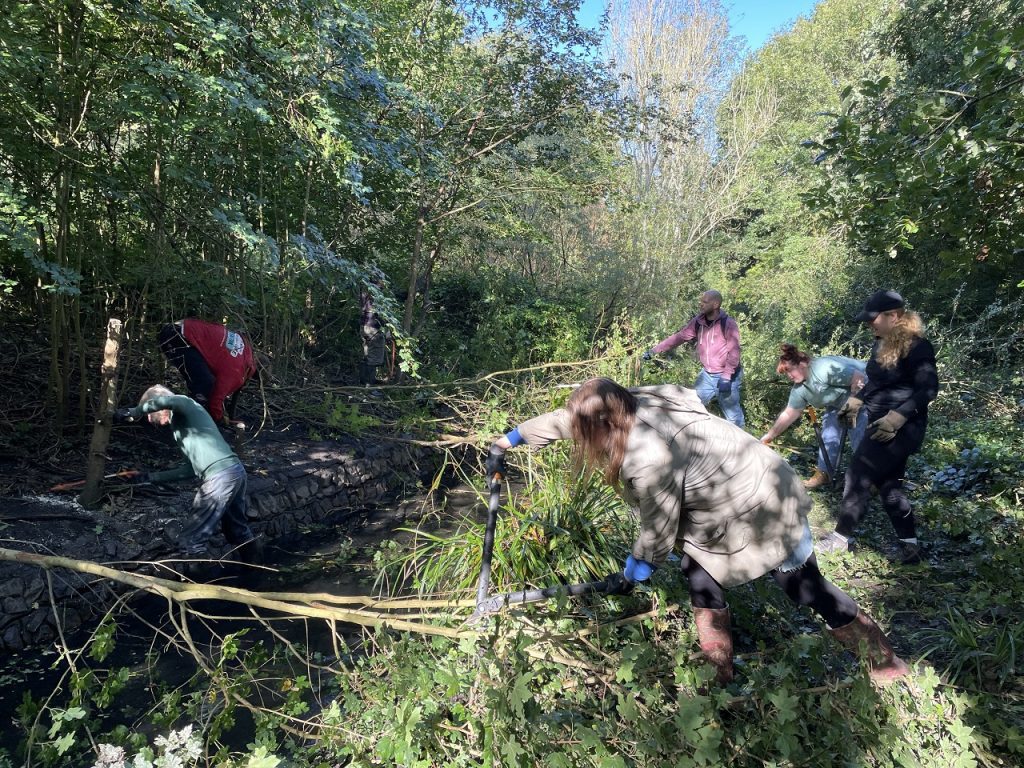
In Chineham, near Basingstoke, volunteers ‘daylighted’ a section of the Petty’s Brook. The stream in this section is largely overshaded, has a concrete lined bed and banks, and acts more like a small canal than river environment.
Overshading of a river can be one of the reasons that prevents the river from reaching good ecological status under the Water Framework Directive.
Trees are a vital element of the ecology of a river environment: they help to reduce water temperatures in summer months and to maintain oxygen levels in the water. Aquatic plants and algae are also an important component of a healthy stream, and excessive shading and reduced light prevents these from growing. We must create the right balance when restoring rivers, creating dappled shade to get the best of both worlds.
With the Chineham Volunteer Group, a relatively new group, we removed vegetation that was causing the river to be enclosed in a tunnel of trees and shrub, giving the stream encouragement to grow some aquatic plants.
Sticklebacks – a torpedo shaped small fish – moved in quickly post-clearance, giving young children at the event the opportunity to catch and inspect them in a net before setting them free back into their revamped environment.
The bugs: training communities to identify invertebrates
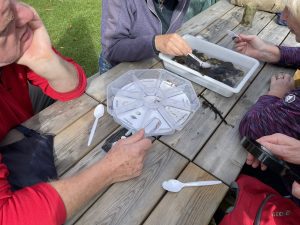
Water quality is the hot topic in the Loddon catchment this year, with projects starting to accurately monitor the state of the water on our patch.
Riverfly monitoring, in part measuring which invertebrates are in rivers, is a nationally important citizen science initiative used to monitor the health of rivers and to detect pollution events.
This year, we included a riverfly ‘show and tell’ for a keen group of residents in and around Basingstoke who will soon be donning wellies or waders to start monitoring the upper stretches in our catchment.
We introduced the basics and set them up to get them identifying the invertebrates in the samples. The four bullhead fish that made it into the invertebrates sample were a happy addition to the , freshwater shrimps, mayflies, snails and leeches also found.
Revisiting the past to see the difference
In addition to all the new activities this year, we also revisited on old project at Arborfield near Reading – a novel nature-like bypass channel facilitating fish migration around four permanent weirs, which impound and restrict rivers: 11 years on, a quick fish survey showed brown trout, chub, barbel, perch and pike all living in the established channel.
As part of this event, the Wild Trout Trust demonstrated some habitat improvement techniques, installing a woody deflector and willow ledge, to improve habitat in the new channel.
Our video shows the water flowing over the new deflector.
Thank you to partners and funders
Loddon Rivers Week, which has been running since 2017, does not happen without an enormous amount of collective effort from partners, and a special thank you must go to the Environment Agency and Network Rail for funding the coordination of the week.
We would also like to thank the partners involved in the week, including Hampshire & Isle of Wight Wildlife Trust, Loddon Fisheries and Conservation Consultative, Wokingham Borough Council, Basingstoke & Deane Borough Council, Chineham Volunteer Group, Blackwater Valley Countryside Partnership, SOLVE (Save Our Loddon Valley Environment), Hook Parish Council and Rushmoor Borough Council.
We’ll be back next year to repeat the progress made this year! Meanwhile, read our River Loddon storymap to find out the issues faced by this network, learn about what the catchment partnership, comprised of dozens of organisations, has achieved already and how you can become involved. Or keep an eye on our events page for volunteering opportunities.
Liven up the Loddon in Rivers Week
Volunteers sought for gravel seeding and planting the ‘Loddon Lily’
Organisers of the annual Loddon Rivers Week are appealing for dozens of volunteers to don wellies and waders and help meet ambitious targets to put 75 tonnes of gravel into riverbeds.
‘Gravel seeding’ events, which will improve spawning habitats for fish and invertebrates, are among seven public volunteering activities during the annual focus week on the Loddon, co-ordinated by the South East Rivers Trust since 2017.
Another key activity of the week, running from 18th-24th September, will be a chance to plant one hundred Loddon Lily bulbs, re-establishing a rare species.
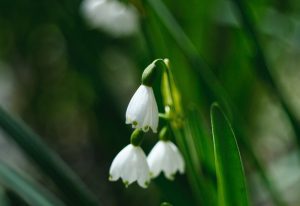
Adopted by many as the Emblem of the Loddon, where it was first found and categorised, this plant is also known as the Summer Snowflake. It looks similar to a snowdrop, but has more open flowers of drooping, white six-petalled bells. Growing next to rivers in April and May, the Loddon Lily produces seeds in July, which disperse along water courses.
The River Loddon, which rises in Basingstoke and stretches across Hampshire, Surrey and Berkshire before reaching the Thames at Wargrave, has plenty of special characteristics. Its upper reaches – where many of the Loddon Rivers Week events will take place – are globally rare chalk stream habitats, hugely valuable for biodiversity and home to brown trout, water voles and otters.
Twelve organisations, from conservation groups to local authorities, are ready to welcome volunteers, or simply people who are interested in learning more from experts in their fields.
Lou Sykes, Catchment Officer at the South East Rivers Trust, said: “Like most rivers in England, the Loddon faces many challenges such as pollution, invasive species and poor habitat and water quality. Loddon Rivers Week gives local people a real chance to do something about this by getting involved in conservation.
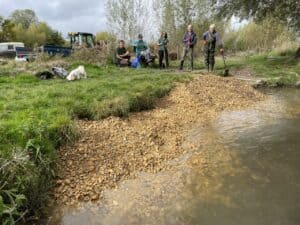
“This work is vital to improving rivers and helping a wide range of wildlife thrive around it. Last year, volunteers were thrilled to see instant results of fish investigating the 30 tonnes of newly laid gravels on one riverbed and this year we have several opportunities to do this vital work in different places.
“Improving rivers and their surroundings makes them wonderful places not only for nature but also to visit. So, we’re particularly excited about boosting numbers of the beautiful Loddon Lily at our planting event, which will be huge fun for all the family.”
Loddon Rivers Week is supported by the Environment Agency and, for the first time, Network Rail.
The public will need to sign up in advance for activities:
Monday 18th September and Tuesday 19th September: Get stuck in to gravel seeding to create spawning ground for fish at Greywell Flyfishers Club, Hook, on the River Whitewater, 9am to 5pm.
Wednesday 20th September: Don waders for restoration work at Ivy Park Rec on the River Blackwater, Aldershot with the South East Rivers Trust and the Blackwater Valley Countryside Partnership, 10am to 3pm.
Wednesday 20th September: Come and install woody deflectors in the River Whitewater, creating some fantastic flow diversity in the watercourse at Greywell Flyfishers Club, 9am to 5pm.
Wednesday 20th September: Plant the Loddon Lily, re-establishing this rare species at Wokingham’s riverside parks.
Thursday 21st September: Join in gravel seeding at Bassetts Mead on the River Whitewater with the Hampshire & Isle of Wight Wildlife Trust, Network Rail and Hook Parish Council, 9am to 3pm.
Saturday 23rd September: The Chineham Conservation Group wants your help clearing vegetation to provide some much-needed light to the Pettys Brook. Tasks also involve a litter pick.
To book a place on any of the activities, visit our events page.
Going live on the Loddon
The launch of our River Loddon Storymap, on behalf of the catchment partnership, allows residents across the area to see the problems faced by the river and the collective actions of around 20 partners in trying to improve the waterways. Residents can also sign up to join in, as individuals or to join the partnership as a group. Lou Sykes, catchment officer for the Loddon, introduces the new Storymap.
Capturing the work of catchments
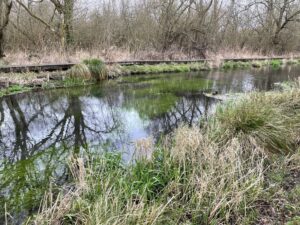
Since its inception in 2000 as the Wandle Trust working on one river, the South East Rivers Trust (SERT) has grown exponentially and now cares for and maintains watercourses across 12 catchments in the south east of England.
SERT is also long established in the Beverley Brook and Hogsmill catchments, hosting and chairing the catchment partnerships. These lead a variety of organisations to devise ways to assess the issues faced by rivers and create plans to improve them using the Catchment Based Approach (CaBA).
Our growth is such that we now partially or fully host and chair 11 of the 12 catchment partnerships throughout the south east. This area stretches from the Kent coast to the Sussex coast, meandering through Surrey and encompassing much of Berkshire and north Hampshire.
It is for this latter area, the 680 km2 River Loddon catchment, that SERT has now launched a Storymap, capturing the partners, issues and plans to improve the whole network of watercourses. This will be the first in a series of new Storymaps on various catchments that will be released in 2023, funded by Thames Water.
The ArcGIS Storymap portal is a story authoring, web-based application, that enables an organisation to share maps in the context of narrative text and other multimedia content.
Using this facility, SERT’s catchment partnerships can detail the pressures faced by the river networks and introduce objectives for improving rivers and the surrounding areas, as identified by the partnership.
Bringing different groups together to solve the river’s issues
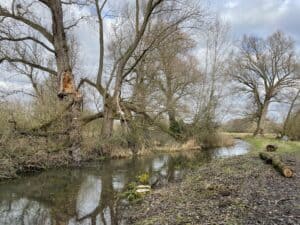
By creating this presence online, the catchment partnership raises awareness and becomes a supportive group, speaking with one voice. In the case of the Loddon catchment, this brings about 20 different groups together: this better empowers collaborative working and helps to ensure all issues affecting the river are noted, captured and addressed under one umbrella. By working together, the catchment partnership can plan and deliver positive actions that will improve the riparian environment across a whole river network, as opposed to working on sections in isolation.
Leading on the Loddon catchment partnership, SERT brings together people from various local organisations and interest groups including water companies, government bodies, local flood groups and angling clubs.
Giving communities and groups the chance to have their voices heard is crucial to the Catchment Based Approach, empowering them with a sense of ownership as the partnership delivers action on the ground.
The Loddon Storymap allows readers to explore the character of the catchment including its tributaries, outlines the issues facing the river, the actions being taken to address them and how to get involved in actions to protect this vast network of water. The maps on the Storymap are ‘live’, meaning that whenever they receive new data they update automatically. Data comes from a variety of different places, with the latest from the Rivers Trust and the Environment Agency showcasing the issues of the catchment.
Maps capture the issues
Summaries of issues affecting the river range from the general to the specific, such as under water quality. Did you know, for example, that road runoff can carry more than 300 different pollutants which can cause short and long-term damage to watercourses?
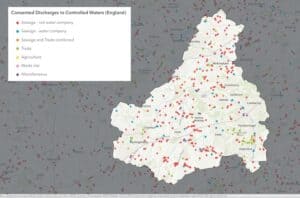
Meanwhile, one of many bespoke maps details the phosphate status of the river network, which rises from chalk-fed streams in Basingstoke and goes all the way to Reading and stretches across to Aldershot. Another map shows the pollution from waste water. Another details the topical issue of sewage spillages.
The extend to which the catchment is affected by flooding, low flows and abstraction is also outlined, with a warning: “The primary risk of flooding in the Loddon catchment is from rivers – and flooding events are being projected to become more frequent and more severe as the climate changes.”
Flood zones and areas most susceptible to flooding, from both rivers and surface water, are shown in another map.
The site also reports the extent to which physical modifications have impacted river health. Like many rivers, the Loddon has been modified over centuries – straightened, widened or deepened – to improve drainage for land, housing, industry and farming.
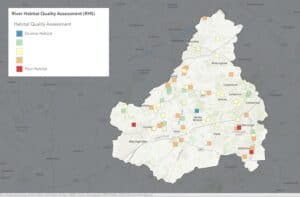
River habitat quality is also shown, with just one area rated as having a truly diverse habitat, according to River Habitat Survey methods. Many areas across the catchment have good ranges of habitat, but others are rated as poor. Another map outlines the results of fish surveys, compiled as indications of river health, allowing readers to click on specific areas.
The issues section ends with a warning: “The number of people living in Basingstoke, Wokingham, Sandhurst, Fleet and Aldershot is rapidly growing and these towns have multiple areas of new development proposed between 2023-2040.
“The south east of England is in the midst of a water shortage crisis. Growing populations together with our changing climate pose a severe risk to the health of our rivers. Many of the challenges faced by our river catchments are likely to be intensified by the demands of a growing population.“
So what can be done?
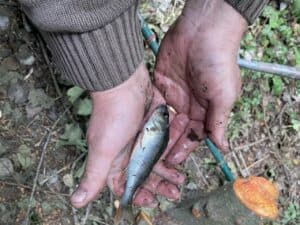
A key section of the Storymap is the action plan, outlining “natural processes opportunity mapping” that includes the potential for “floodplain reconnection”, for example lowering artificially incised riverbanks, the potential for riverside woodlands and such opportunities across the wider catchment.
Key priorities are to identify habitat improvements, deliver restoration or enhancements, improve fish passage by tackling barriers, keep rivers cool in the face of a changing climate and tackling invasive species.
It also outlines the benefit of natural capital mapping. “Taking a GIS-based catchment approach to understanding the location, condition and potential of natural assets,” the portal says “allows us to target action to protect water resources and communicate change. This enables us to integrate a catchment-scale nature-based solutions approach with water company plans, catchment partnerships, and landowners.”
Mentioning work that has been carried out on the catchment so far, the portal highlights Loddon Rivers Week, which takes place every September. Last year, residents witnessed instant improvements after taking part in gravel seeding in Hook and installed large woody materials at Tice’s Meadow and Ivy Recreation Ground in Aldershot. Other work on the Loddon involves a long-standing effort to remove Floating Pennywort and creation of the Charvil Meadows backwater in 2020.
Lastly, the Get Involved section prompts people who see issues with their river to report them to the relevant authority, to suggest enhancement protects, join the partnership as a group, volunteer for events or invest in the river by financially supporting enhancement work.
Whatever you want to know about the Loddon, visit the Storymap and get involved!
Loddon Rivers Week has instant impact
Some of the volunteers who took part in Loddon Rivers Week witnessed immediate improvements to waterways, reports Lou Sykes, our Loddon Catchment Officer.
The annual week of events took place at the end of September. Activities varied from walks and talks to giving people hands-on opportunities to get involved in river restoration.
Launch yourself into Loddon Rivers Week
Come and join the South East Rivers Trust and partners for a fun-packed series of events to improve the health of the River Loddon.
During Loddon Rivers Week, running between Monday 26th September and Sunday 2nd October, there’s something for everyone, whether it is joining in guided walks or donning waders and taking positive action via restoration work in rivers across several parts of the catchment.
You’ll need to sign up for all activities in advance on our events page or via the contact details below.

